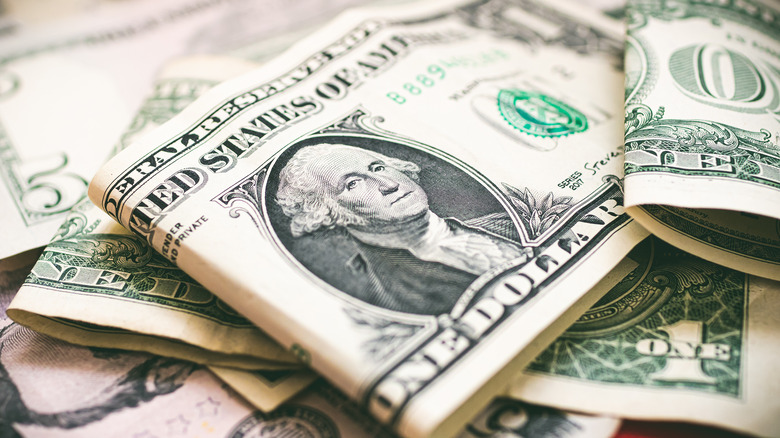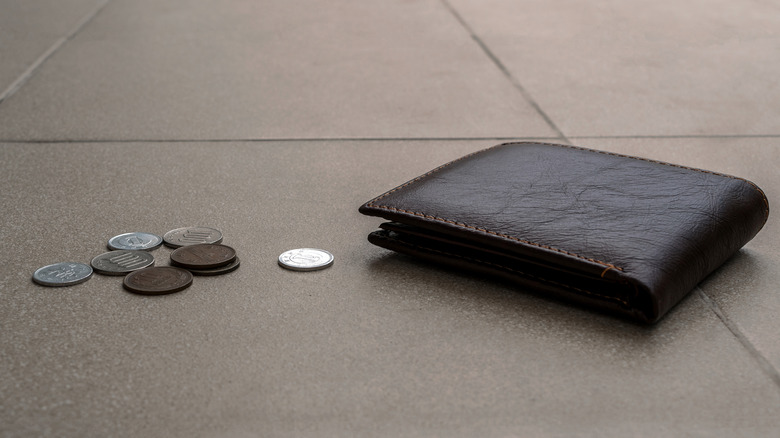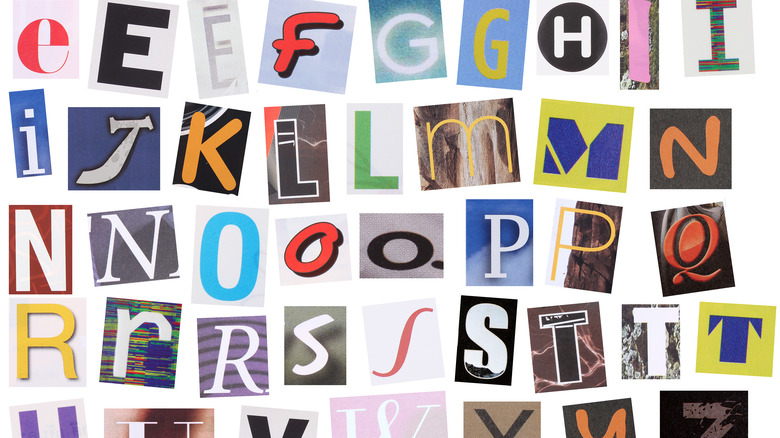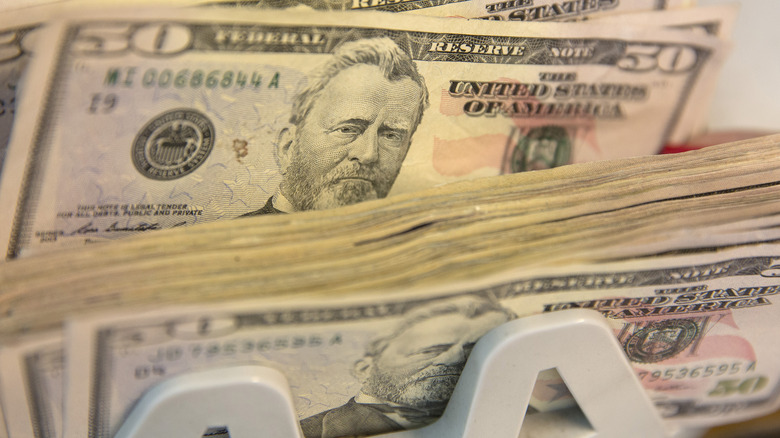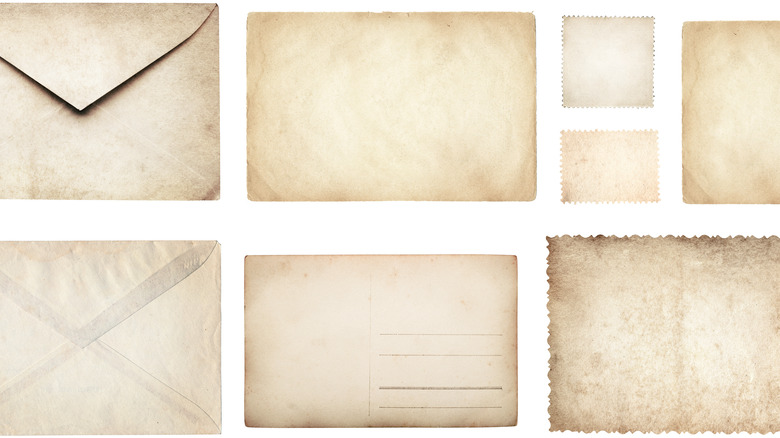The Strange History Of The US Conscience Fund
In 1811, the U.S. government received a surprising piece of mail — $5. A note accompanied the anonymous donation, apologizing for defrauding the government, says the Christian Science Monitor. Inspired by the gesture, the Treasury Department, in partnership with President James Madison's administration, set up an unofficial "Conscience Fund." Those who believed they'd wronged the government — or anyone else, for that matter — could make amends through a monetary donation, explains the Associated Press.
The fund, given official status in 1950, has become an historical chronicle of American guilt (per (Christian Science Monitor). Children, veterans, and government employees have all used the fund to make amends. The notes accompanying the donations provide glimpses into the lives of the repentant. Some are earnest, and others sarcastic. For instance, one donor wrote: "Dear Internal Revenue Service, I have not been able to sleep at night because I cheated on last year's income tax. Enclosed find a cashier's check for $1,000. If I still can't sleep, I'll send you the balance" (via WYTV).
Who donates to the conscience fund?
Conscience Fund donors range from people attempting to settle their taxes to those who have intentionally stolen. One donor divulged: "About eight years ago I took from a railroad station an item worth about $25 and this has been on my conscience since, so I'm enclosing $50 to clear my conscience," reported The Baltimore Sun. Like the letter writer, many donors provide interest, in addition to the initial sum stolen.
Others show remorse for workplace theft. According to Insider, one note read, "This check for $1,300 is to make restitution of tools, leave days, and other things I stole while I was in the Navy from '62 to '67." Similarly, a nurse confided, ″While serving in the Army Nurse Corps during World War II, I pilfered a small hypodermic syringe. Enclosed please find $10 which should cover the cost plus a bit of interest" (via Associated Press). Donors have even returned money found on the street. "This afternoon I found the enclosed coin on the pavement," confesses one letter-writer documented by The Baltimore Sun.
Anonymous donations spark curiosity
Many donations remain anonymous, and donors go to various lengths to preserve their anonymity. People often send cash or cashier's checks. Others send their money through a third party, usually attorneys or family members, reports Insider.
Some anonymous notes raise more questions than answers. Take this donor who wrote, "Enclosed is $210 for some letters I read many years ago and some food I didn't pay for," (via The Baltimore Sun). What did the letters say? How did they bring the note-writer guilt? We'll never know. Even more intriguing, clergy members send money on behalf of those who have made deathbed confessions and want to leave the world with a clean conscience, reports WYTV.
That said, the fund doesn't pursue legal action against the donors. In 1987, Internal Revenue Service spokesperson Wilson Fadely told the Christian Science Monitor that there's no mandate to investigate the donors. However, in theory, the Treasury Department could prosecute donors. For now, fund contributors can expect thank-you notes if they include a return address, according to The Baltimore Sun.
How much money is donated to the Conscience Fund?
The Conscience Fund calls the money collected "donations" because it is unsolicited, explained Donna Fox in the Christian Science Monitor in 1987. Though contributions vary widely, typically, donations run under $100, according to Insider. So far, the smallest donation totaled nine cents and was sent from Massachusetts by a man who hoped to make amends for reusing a three-cent postage stamp, writes WYTV.
As reported in 2017, the largest sum donated was a mysteriously specific sum of $155,502. The donor sent the money anonymously and without a note, according to WYTV. Some donors even send non-monetary gifts, such as one woman who sent handmade quilts to help resolve a tax bill (per WYTV). Some people pay in installments, sending multiple letters, says the Christian Science Monitor.
Regardless of the payment method, most letter writers hope that in exchange for their donation, they receive forgiveness and relief from their guilt. This 1966 letter writer expresses that, ″My conscience hurts because I stole government property: two metal panel office dividers with plastic upper portion. I ask your forgiveness and say I am extremely sorry for this rotten act. Enclosed $50 bill to cover cost . ... May God and you forgive me″ (via Associated Press).
Where does the money go?
Regardless of the donations' size, according to Insider, the Treasury Department labels the money "miscellaneous receipts" and puts it in a general account. If spent, the money goes toward general expenses. Some donors do share where they want their money to go. For example, in 1987, several notes expressed support for Ronald Reagan's bombing of Libya, urging their government to use their money toward military efforts (via Associated Press). Similarly, some messages express patriotism and approval of the government.
Others thank the government for the support of social services, such as one person who included their desire to pay the government back for the help their family received. ″Your federal welfare office helped me and my family when I was a kid and I am trying to pay you back . ... Enclosed is $1,000 in American Express checks. My debt for myself alone is $1,275, I figure. I will try to send more later" (via Associated Press).
Donations also vary based on the time of year. In 1987, Andy Montgomery, a spokesperson for the Treasury Department, shared with the Christian Science Monitor that he sees an uptick in donations around holidays and tax season.
A recent drop in donations
In 2017, Insider reported that the number of donations and the annual amount of money received by the Conscience Fund had begun to dwindle, starting in 2015. Donations went from $1.1 million in 2014 down to $23,000 in 2016. At the time of the report, about halfway through 2017, the fund had only received $1,600. Insider's Chris Weller noted a correlation between dropping donations and historically low levels of trust in the government. However, Department of Treasury representatives were hesitant to link general attitudes toward the government with donations. Instead, they noted that donation amounts vary widely from year to year (via Insider).
Some wonder if the Department of Treasury would ever consider closing the Conscience Fund, should donations be too low. Luckily, one of the fund's managers, Ryan Hanna, told Insider, "I don't know that there would ever been an initiative to get rid of it." Hanna explains that the fund isn't a day-to-day concern for the Treasury Department. Instead, the fund and its personal stories are more of an uplifting novelty.
Those who run the fund at the Department of Treasury keep all of the notes that accompany donations, reports The Christian Science Monitor. If you have anything you would like to get off your back, the Department of Treasury lists its mailing address as: Department of Treasury, 1500 Pennsylvania Avenue NW, Washington, D.C. 20220.
